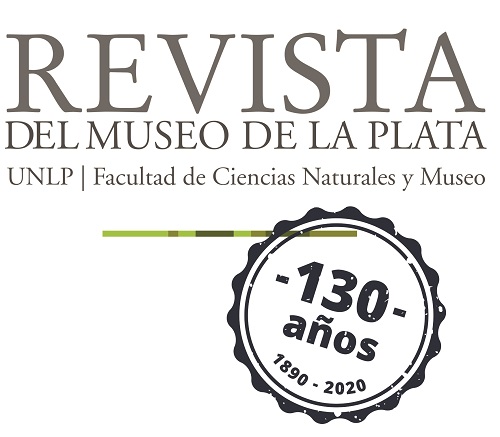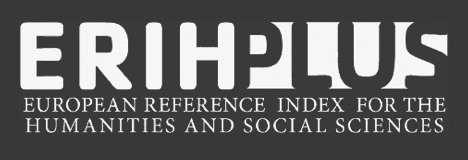Paternal autochthonous lineages from Gran Chaco, analysed by microsatellites
DOI:
https://doi.org/10.24215/25456377e129Keywords:
Genetics, Y chromosome, STR, Native American, Gran Chaco,Abstract
Gran Chaco is one of the most recently peopled areas from the South American Lowlands; it has kept its ethnolinguistic diversity and shows evidence of interethnic contacts. The goal of this paper is to describe the structure of native male lineages in Gran Chaco populations, for which we analyzed 116 individuals from wichi, toba, chorote, mocoví populations in Argentina and lengua and ayoreo populations from Paraguay. We identified paternal haplogroups by AFLP and haplotypes based on 17 microsatellites. We added to the analyses 166 individuals from the Argentinian Northwest (NOA) for regional comparisons. We estimated haplotypic frequencies and fixation indexes and assessed the correlation between geographic and genetic distances. We performed Principal Coordinates Analysis and calculated possible genetic barriers. We found 167 unique haplotypes, 43of which were shared between the Gran Chaco and NOA populations. FST distances and Autocorrelation Analysis show a geographic pattern of isolation by distance and 3 barriers that segregate the toba from Salta, lengua and ayoreo from Paraguay and the mocovi from Chaco, which is expected since these last two populations are geographically more distant. These barriers persist when the Argentinian Northwest samples are added, but there is no evidence of barriers between the Gran Chaco and Northwest populations, suggesting connections between these two regions.References
Bailliet, G., Rothhammer, F., Carnese, F., Bravi, C. & Bianchi, N. (1994) ?Founder Mitochondrial Haplotypes in Amerindian Populations?, American Journal of Human Genetics 54, pp. 27-33.
Braunstein, J. (2005) ?Los pueblos indígenas del Gran Chaco?, Mundo de Antes 4, pp. 127-137.
Braunstein, J & Meichtry, N (2008) Liderazgo. Representatividad y control social en el Gran Chaco, Corrientes, EUDENE.
Cabana, G., Merriwether, D.A., Huley, K. & Demarchi, D.A. (2006) ?Is the Genetic Structure of Gran Chaco Populations Unique? Interregional Perspectives on Native South American Mitochondrial DNA Variation?, American Journal of Physical Anthropology 131, pp. 108-119.
Calandra, H. & Salceda, S. (2004) ?El territorio y sus ocupantes: ¿qué, quienes, cómo y cuándo?? Folia Histórica del Nordeste vol. 15, pp. 107-128.
Cremonte, M.B., Garay de Fumagali, M. & Sica, G. (2005) ?La frontera Oriental al Sur de la Quebrada de Humahuaca. Un espacio conectivo?, Mundo de Antes 4, pp. 51-66.
Demarchi, D.A., Panzetta-Dutari, G.M., Motran, C.C., López de Basualdo, M.A. & Marcellino, A.J. (2001) ?Mitochondrial DNA haplogroups in Amerindian populations from the Gran Chaco?, American Journal Physical Anthropology 115, pp. 199-203.
Demarchi, D. & Mitchell, J. (2004) Genetic structure and gene flow in Gran Chaco populations of Argentina: evidence from Y-chromosome markers?, Human Biology 76(3), pp. 413?429.
Dominguez, M., Golluscio, L. & Gutiérrez, A. (2006) ?Los vilelas del Chaco: desestructuración cultural, invisibilización y estrategias identitarias?, Ibero-Amerikanisches Institut PK 23, pp. 1-28.
Dornelles, C.L., Battilana, J., Fagundes, N.J.R., Freitas, L.B., Bonatto, S.L. & Salzano, F.M. (2004) ?Population: The AyoreoIndians of Bolivia and Paraguay?, American Journal of Human Biology 16, pp.479?488.
Excoffier, L., Smouse, P. & Quattro, J. (1992) ?Analysis of molecular variance inferred from metric distances among DNA haplotypes: Application to human mitochondrial DNA restriction data?, Genetics 131, pp. 479-491.
Excoffier, L. & Lischer, H.E. (2010) ?Arlequin suite ver 3.5: A new series of programs to perform population genetics analyses under Linux and Windows?, Molecular Ecology Resources 10, pp. 564-567.
Goicoechea., A.S., Carnese, F.R., Dejean ,C., Avena, A.S., Weimer, T.A., Franco, M.H.L.P., Callegari-Jacques, S.M., Estalote, A.C., Simoes, M.L.M.S., Palatnik, M. & Salzano, F.M. (2001) ?Genetic relationships between Amerindian populations of Argentina?, American Journal Physical Anthropololgy 115, pp 133-143.
Hammer,Ã?., Harper, D.A.T. & Ryan, P. D. (2001) ?PAST: Paleontological Statistics Software Package for Education and Data Analysis? Palaeontologia Electronica 4(1), 9 pp. https://palaeo-electronica.org/2001_1/past/past.pdf
Jurado Medina, L. S. (2015) Tipificación de marcadores uniparentales en poblaciones mestizas de Argentina, Tesis Doctoral Inédita, La Plata, Universidad Nacional de La Plata.
Jurado Medina, L.S., Ramallo, V., Calandra, H., Lamenza, G., Braunstein, J., Salceda, S. & Bailliet, G. (2014) ?Linajes paternos del Gran Chaco, un abordaje desde el ADN?, Folia Histórica del Nordeste 22, pp. 187-202.
Lamenza, G., Calandra, H.A. & Salceda, S.A. (2016) ?Nuevos aportes a la arqueología de Formosa (Argentina): cronología del sitio arqueológico ?El Quebracho?, Arqueología 22(2), pp. 399-408.
Lamenza, G.N., Calandra, H.A. & Salceda, S.A. (2019) ?Arqueología de los ríos Pilcomayo, Bermejo y Paraguay?, Revista del Museo de La Plata 4(2), pp. 481-510
Manni, F., Guerard, E. & Heyer, E. (2004) ?Geographic patterns of (genetic, morphologic, linguistic) variation: how barriers can be detected by using Monmonnier´salgorithm?, Human Biology 76(2), pp. 173-190.
Pauro, M., García, A., Nores. R. & Demarchi, D.A. (2013) ?Analysis of uniparental lineages in two villages of Santiago Del Estero, Argentina, seat of Pueblos de Indios in colonial times?, Human Biology 85(5), pp. 699-720.
Ramallo, V., Santos, M.R., Muzzio, M., Motti, J.M.B., Salceda, S. &
Bailliet, G. (2009) ?Linajes masculinos y su diversidad en comunidades Wichí de Formosa?, Revista del Museo de Antropología 2, pp. 67-74.
Rosenberg, M.S. & Anderson, C.D. (2011) ?PASSaGE: Pattern Analysis, Spatial Statistics, and Geographic Exegesis. Versión 2?, Methods in Ecology and Evolution 2 (3), pp. 229-332.
Salzano, F.M. & Callegari-Jacques, S.M. (1988) South American Indian: A case study in evolution, Oxford, Oxford University Press.
Sokal, R.R. & Oden, N.L. (1978) ?Spatial autocorrelation in biology. 2. Some biological implications and four applications of evolutionary and ecological interest?, Biological Journal of the Linnean Society 10, pp. 229-249.
Susnik, B. (1972) Dimensiones Migratorias y Pautas Culturales de los Pueblos del Gran Chaco y su Periferia. Enfoque Etnológico, Resistencia,Instituto de Historia, Facultad de Humanidades. Universidad del Nordeste.
Vidal, A. & Braunstein, J. (2020) ?The Southern Plains and the ContinentalTip?. En: Güldemann, T., McConvell, P. & Rhodes, R.A. (eds) The Languages of Hunter-gatherers. Historical and global pespectives, Cambridge, Cambridge University Press, pp.641-669.
Downloads
Published
Issue
Section
License
La publicación en la RMLP se realiza bajo los términos de la licencia de uso y distribución Creative Commons BY-NC-SA 4.0 para Argentina (https://creativecommons.org/licenses/by-nc-sa/4.0/) que permite a terceros la distribución, la copia y la exhibición del artículo siempre que citen la autoría del trabajo, la publicación en la RMLP, número concreto y las páginas en la que encontraron la información. No se puede obtener ningún beneficio comercial y no se pueden realizar obras derivadas con fines comerciales que no autorice la editorial. Si se remezcla, transforma o construye sobre el material, deben distribuir sus contribuciones bajo la misma licencia que el original.
La puesta a disposición del artículo en la RMLP supone para los autores argentinos el cumplimiento de lo establecido en la Ley 26899 de Creación de Repositorios Digitales Institucionales de Acceso Abierto, Propios o Compartidos, del 13/11/2013 en su artículo 5º, en lo relativo a la obligatoriedad de facilitar en acceso abierto los resultados de investigaciones financiadas por agencias gubernamentales y de organismos nacionales de ciencia y tecnología del Sistema Nacional de Ciencia, Tecnología e Innovación.










